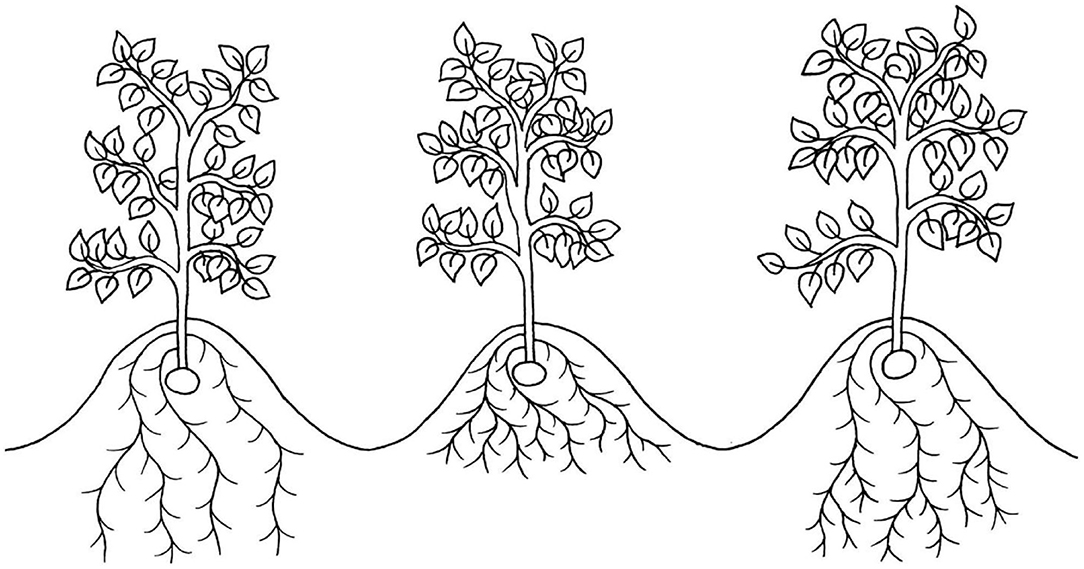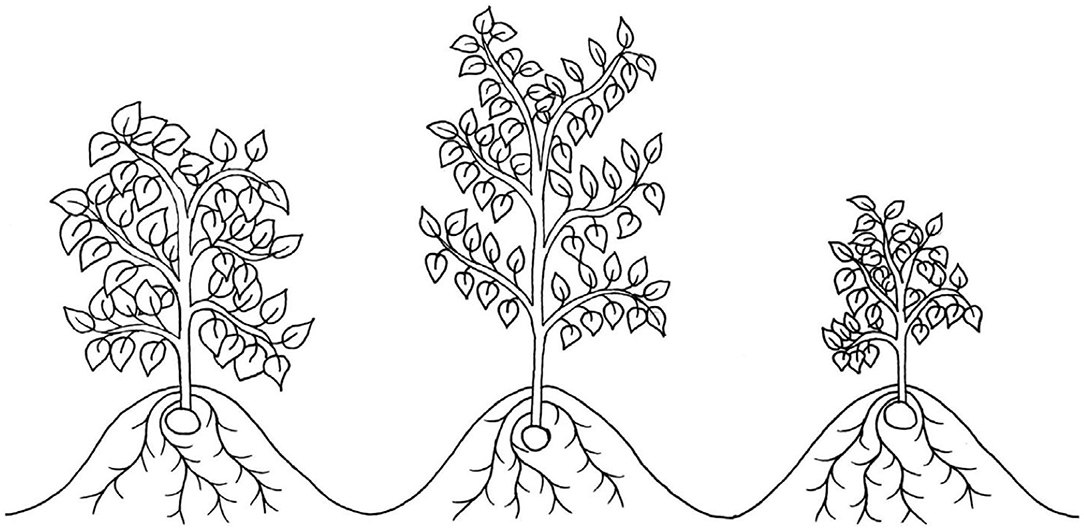
94% of researchers rate our articles as excellent or good
Learn more about the work of our research integrity team to safeguard the quality of each article we publish.
Find out more
CORRECTION article
Front. Plant Sci. , 30 March 2021
Sec. Plant Abiotic Stress
Volume 12 - 2021 | https://doi.org/10.3389/fpls.2021.675690
This article is a correction to:
Morphophysiology of Potato (Solanum tuberosum) in Response to Drought Stress: Paving the Way Forward
A Corrigendum on
Morphophysiology of Potato (Solanum tuberosum) in Response to Drought Stress: Paving the Way Forward
by Hill, D., Nelson, D., Hammond, J., and Bell, L. (2021). Front. Plant Sci. 11:597554. doi: 10.3389/fpls.2020.597554
In the original article, there was a mistake in the legends for Figures 1 and 2 as published. The figure legends are correct but have been attributed to the wrong figures. The illustration comprising Figure 2 should be first in the paper with the legend from Figure 1, and vice versa. The correct legends appear below.

Figure 1. An illustration of three root morphotypes which have been suggested to improve drought tolerance in potato: deep roots (left), dense roots in shallow soil strata (middle) and dense roots in deep soil strata (right).

Figure 2. An illustration of three canopy architectures, two of which have been suggested to improve drought tolerance in potato: open “stem-type” canopies, e.g., cv. Tomba, which may improve light penetrance and interception (middle), and very small canopies, e.g., cv. Alpha, which may reduce evapotranspirative water loss (right). A dense “leaf-type” canopy, e.g., cv. Procudent, which has been suggested to be detrimental to potato yields under drought is also illustrated (left).
In the original article, there were two errors. Two dates were printed with commas. 1807 and 1845 were printed as 1,807 and 1,845 respectively.
A correction has been made to Introduction, Potato Cultivation, Paragraph 1:
The cultivated potato, Solanum tuberosum, originated in the New World, where its wild relatives can still be found from the southern United States (38°N) to Argentina and Chile (41°S) (Spooner et al., 2004). Potato cultivation began in South America around 8,000 years ago (Lutaladio and Castaldi, 2009), resulting in the many thousands of landraces still grown by Andean smallholders (Bradshaw and Ramsay, 2009). Potatoes were first introduced to Europe in the 16th century by Spanish conquistadors during the Columbian exchange (Lutaladio and Castaldi, 2009). By the end of that century, potatoes had been introduced into the United Kingdom and Ireland, where they had a transformative effect on society, helping to feed the industrial revolution (Bradshaw and Ramsay, 2009). Records of potato breeding in Europe begin around a 100 years later in 1807 (Bradshaw and Ramsay, 2009), but overreliance on a few cultivars and clonal propagation resulted in the infamous destruction of the Irish potato crop by late blight in 1845 (Lutaladio and Castaldi, 2009). A concerted effort to produce resistant, high-yielding cultivars followed, some of which are still grown today (Lutaladio and Castaldi, 2009).
The authors apologize for this error and state that this does not change the scientific conclusions of the article in any way. The original article has been updated.
Bradshaw, J. E., and Ramsay, G. (2009). “Potato origin and production,” in Advances in Potato Chemistry and Technology, 1st Edn, eds J. Singh and L. Kaur (San Diego, CA: Academic Press). doi: 10.1016/b978-0-12-374349-7.00001-5
Lutaladio, N. B., and Castaldi, L. (2009). Potato: the hidden treasure. J. Food Compos. Anal. 22, 491–493. doi: 10.1016/j.jfca.2009.05.002
Keywords: drought, stress tolerance, climate change, crop morphophysiology, food security, potato, Solanum tuberosum L., high-throughput phenotyping
Citation: Hill D, Nelson D, Hammond J and Bell L (2021) Corrigendum: Morphophysiology of Potato (Solanum tuberosum) in Response to Drought Stress: Paving the Way Forward. Front. Plant Sci. 12:675690. doi: 10.3389/fpls.2021.675690
Received: 03 March 2021; Accepted: 08 March 2021;
Published: 30 March 2021.
Approved by:
Frontiers Editorial Office, Frontiers Media SA, SwitzerlandCopyright © 2021 Hill, Nelson, Hammond and Bell. This is an open-access article distributed under the terms of the Creative Commons Attribution License (CC BY). The use, distribution or reproduction in other forums is permitted, provided the original author(s) and the copyright owner(s) are credited and that the original publication in this journal is cited, in accordance with accepted academic practice. No use, distribution or reproduction is permitted which does not comply with these terms.
*Correspondence: Dominic Hill, ZC5oaWxsQHBnci5yZWFkaW5nLmFjLnVr
Disclaimer: All claims expressed in this article are solely those of the authors and do not necessarily represent those of their affiliated organizations, or those of the publisher, the editors and the reviewers. Any product that may be evaluated in this article or claim that may be made by its manufacturer is not guaranteed or endorsed by the publisher.
Research integrity at Frontiers

Learn more about the work of our research integrity team to safeguard the quality of each article we publish.